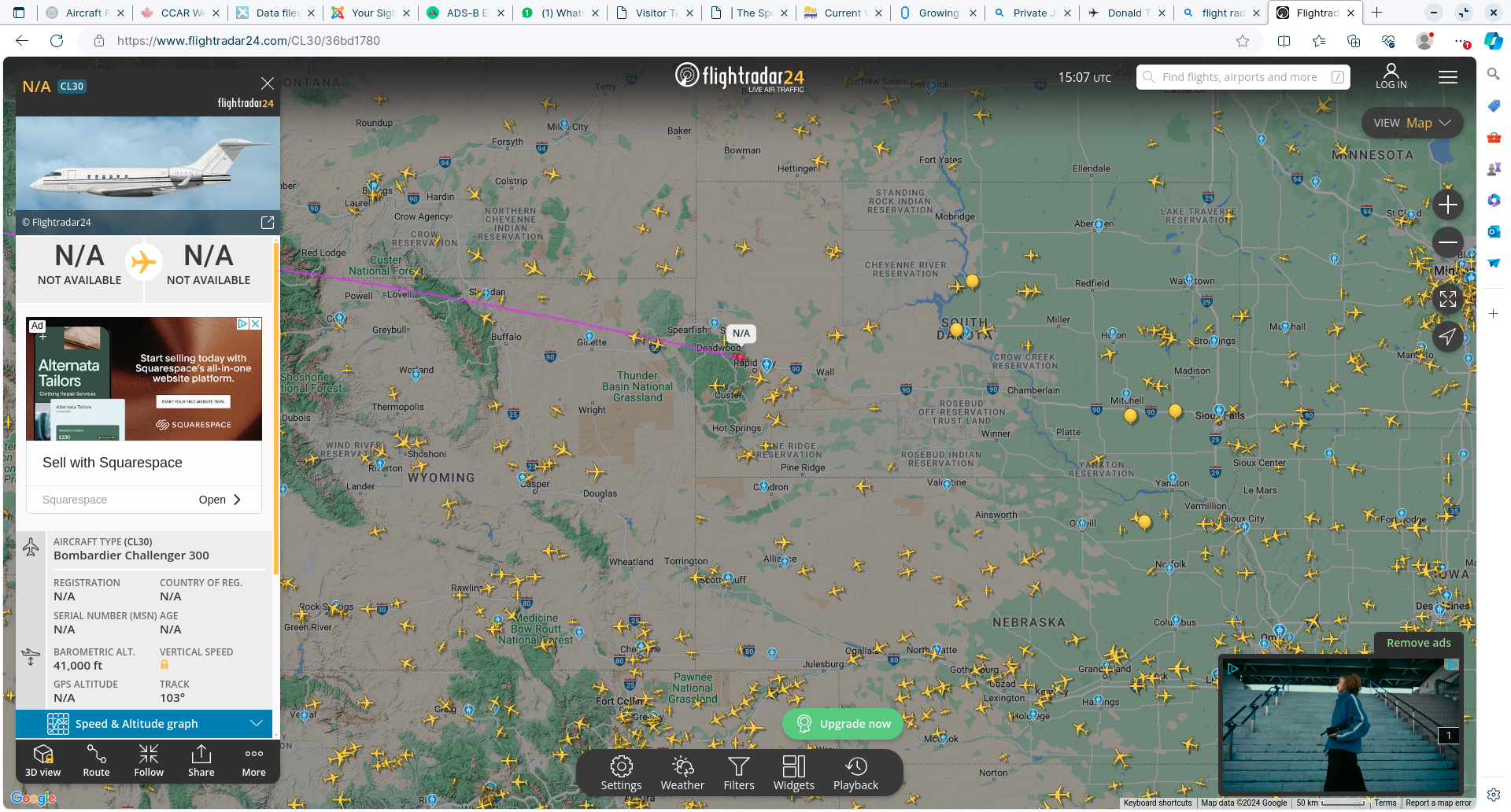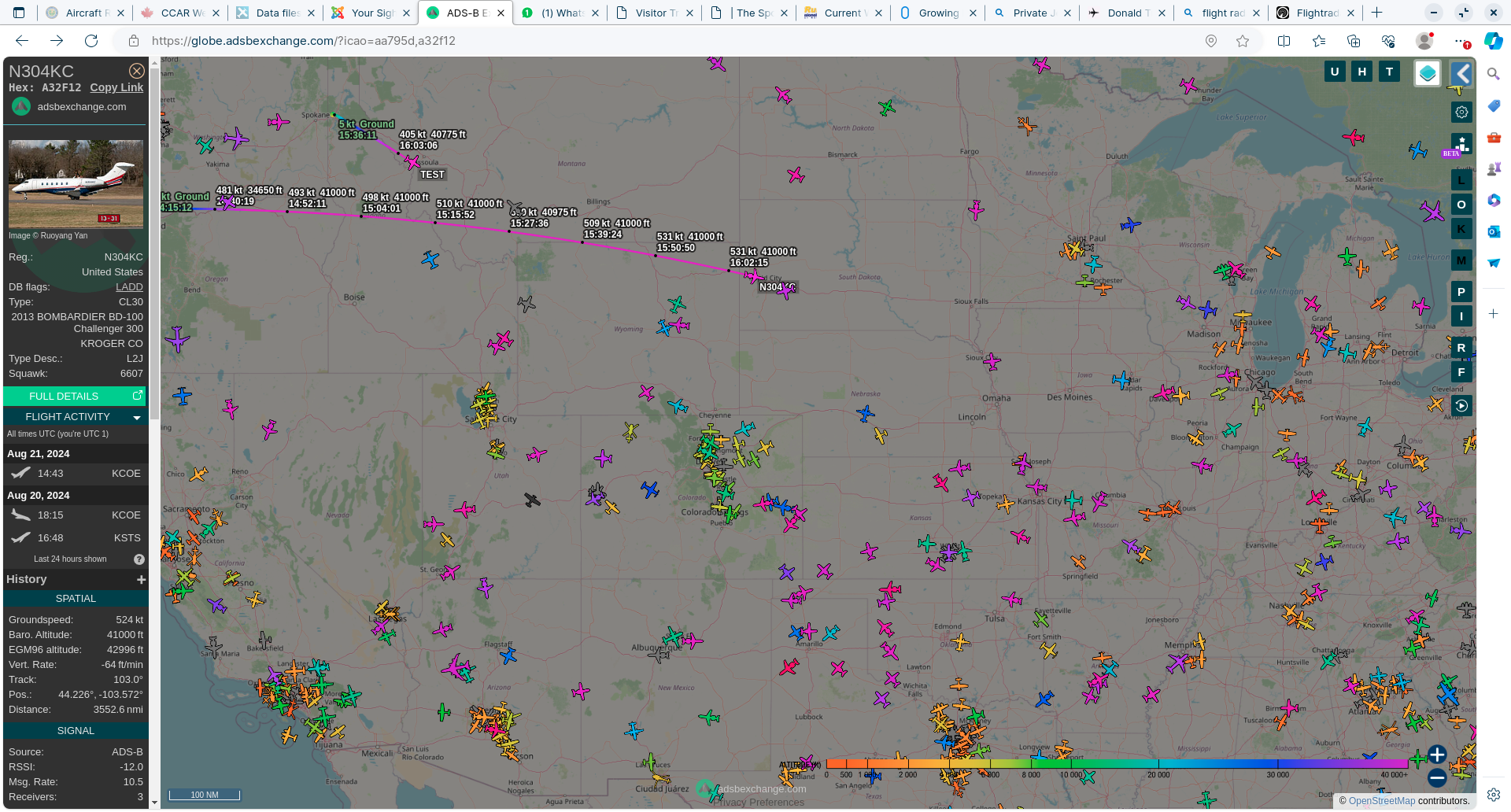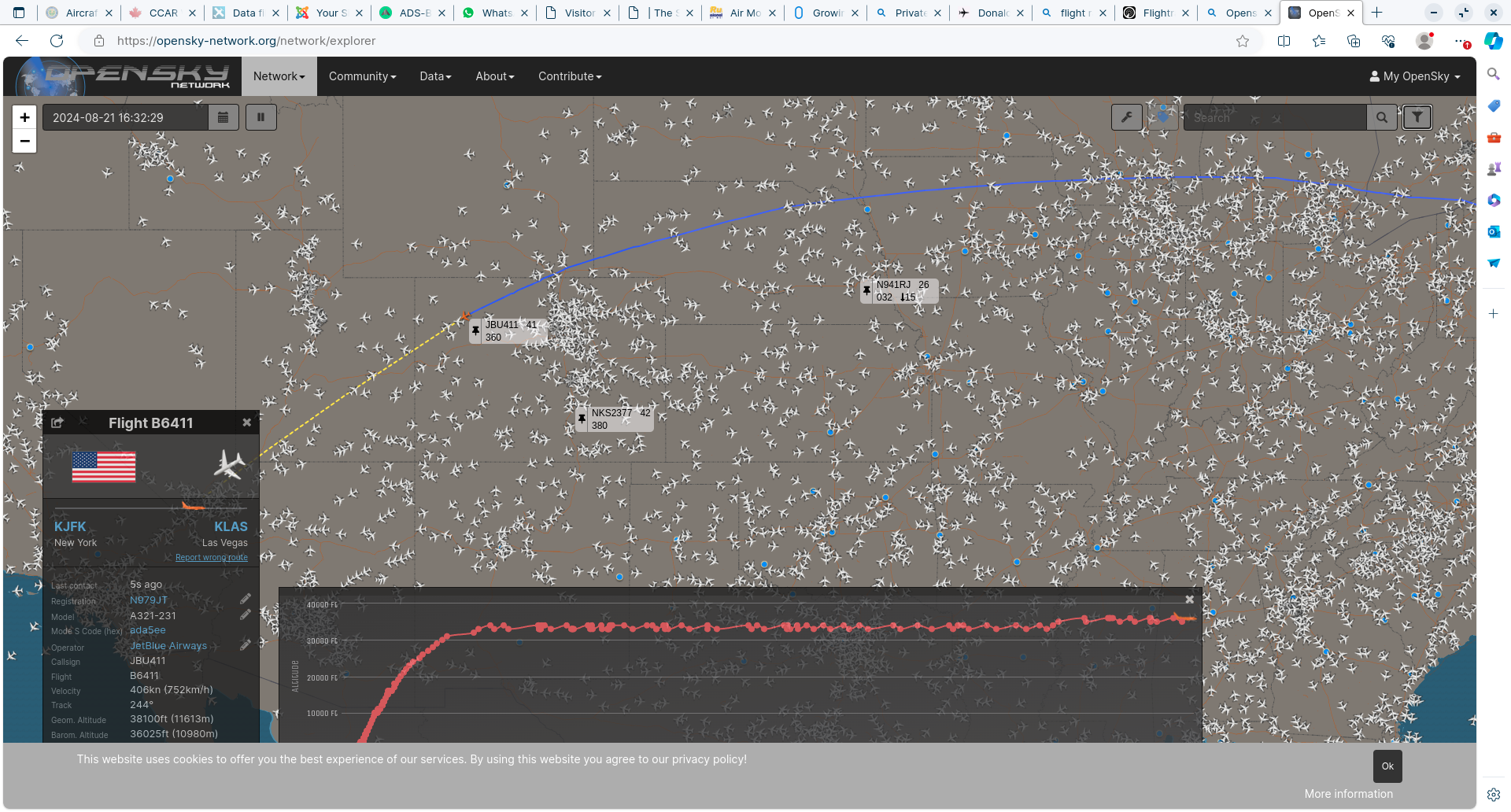Aircraft Tracking Sites
Tracking Sites
There are a number of tracking sites, from the ubiquitous Flight Radar 24 all the way to the somewhat concerning JetSpy. For the average person with an interest in aviation, the sites like Flight Radar 24 are generally good enough.
Other sites have advantages, like they don’t take the FAA SWIM feed – so can display all the data that the aircraft transmits. This bypasses the restrictions placed on sites like Flight Radar 24. A typical example would be an aircraft not showing the departure and arrival airport, or some other information. In the screenshot below, you can see that there is little information available, this aircraft is subscribed to the LADD programme so the data displayed on FR24 is restricted.
To view these images at full resolution (they are simple screen shots), right click on the image and select open in a new tab.

If we now look at the same aircraft on ADSB, we can see that there is more information. Which is why when I’m looking at these web sites I will normally use the following site “globe.adsbexchange.com”, none of the tracking sites are perfect – there are sometimes reasons for using more than one at a time.

The above two sites are the basic sites that will suit most peoples needs, another site that I use that is a little more difficult to navigate and has slightly more restricted graphical interface is “opensky-network.org” which unlike the other sites does require you to create an account for access. When all three sites are used in conjunction, it is generally possible to find all the information that I require.

All of these sites will be affected by the PIA programme, as the actual aircraft will broadcast a fake identity – they will display only the data based on tracking the temporary ICAO Hex code. But for aircraft other than these they deliver sufficient information to identify the aircraft and its routing.
In my next post I will cover the sites that concentrate on tracking the private arcraft of the wealthy.